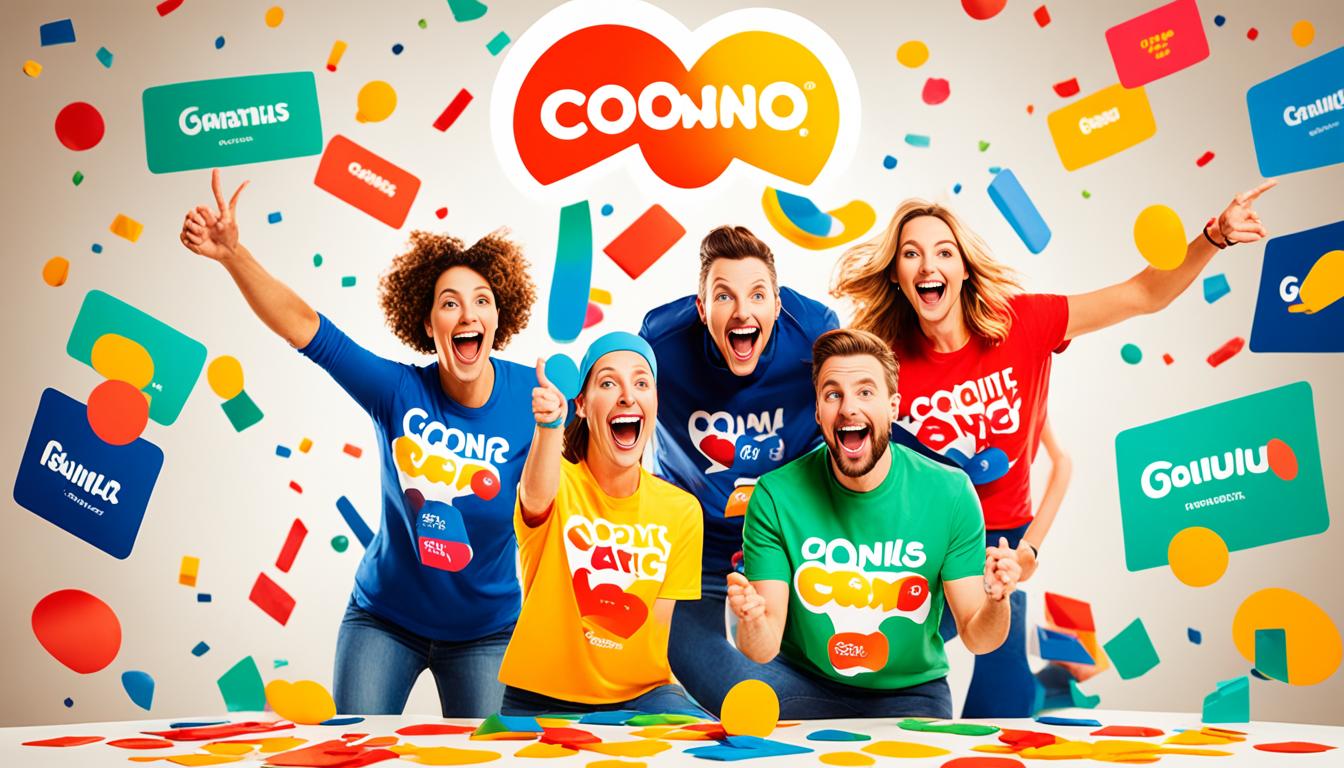Nike, a global leader in athletic footwear and apparel, has consistently demonstrated its prowess in marketing and brand building. With a rich history dating back to its founding in 1964 as Blue Ribbon Sports, Nike has evolved into a powerhouse, known for its innovative products, powerful marketing campaigns, and commitment to social causes.
Over the years, Nike has strategically expanded its brand through a series of acquisitions and partnerships. It has acquired and sold several footwear and apparel companies, including Starter, Zodiac, Celect, and Datalogue, and most recently, it acquired RTFKT Studios, a leading digital footwear and apparel design studio.
The success of Nike can be attributed to its strong branding strategy, which encompasses a diverse range of initiatives and approaches. From its iconic slogan “Just Do It” to its emphasis on emotional branding and empowerment, Nike has created a distinct and powerful brand identity that resonates with its target audience.
As part of its branding strategy, Nike has set clear goals and objectives. These include promoting diversity, equity, and inclusion, creating sustainable materials, advancing a transparent and responsible supply chain, investing in organizations that focus on economic empowerment, education, and equality, and promoting an active lifestyle. By aligning its brand with these values, Nike has successfully connected with consumers who share these ideals.
Nike’s target audience is broad and diverse, comprising athletes, professionals, enthusiasts, running enthusiasts, sports enthusiasts, women in sports, young athletes, and sustainability advocates. The brand’s ability to appeal to such a wide range of consumers is a testament to its effective marketing and branding efforts.
When it comes to marketing, Nike employs a multi-channel approach. Its advertising strategy includes television ads, social media marketing, new media marketing, and emotional branding. Nike’s commercials predominantly feature themes of empowerment, with a particular focus on empowering women. The brand also heavily relies on digital marketing, with a strong presence on social media platforms.
Nike’s success in branding can be attributed to its consistent emphasis on innovation. The brand continuously introduces cutting-edge products and technologies, collaborating with athletes, designers, and artists to create exclusive and limited-edition collections. This commitment to innovation has allowed Nike to maintain its position as a market leader and stay ahead of its competitors.
Key Takeaways:
- Nike’s branding strategy revolves around promoting diversity, equity, and inclusion, sustainability, and an active lifestyle.
- The brand’s target audience includes athletes, professionals, enthusiasts, women in sports, and sustainability advocates.
- Nike’s advertising strategy focuses on emotional branding and empowerment, predominantly targeting women.
- The brand heavily relies on digital marketing and has a strong presence on social media platforms.
- Nike’s commitment to innovation and continuous product development sets it apart from its competitors.
About Nike
Nike Inc., founded by Bill Bowerman and Phil Knight in 1964 as Blue Ribbon Sports, is an American multinational company with its headquarters in Beaverton, Oregon. The company designs, develops, manufactures, and globally markets footwear, accessories, apparel, equipment, and services. In 1971, Blue Ribbon Sports rebranded as Nike Inc., and since then, the Nike brand has become synonymous with athletic excellence and innovation.
Nike’s success can be attributed to its commitment to research and development. The brand invests heavily in technologies like Flyknit, which involves extensive research and testing to ensure the effectiveness of their products. Nike’s Flyknit technology has revolutionized the athletic footwear industry, providing a lightweight and supportive fit that enhances performance.
To reinforce their commitment to excellence, Nike has partnered with renowned athletes such as Michael Jordan and Serena Williams, who embody exceptional prowess in their respective fields. These brand ambassadors not only elevate Nike’s reputation but also inspire athletes worldwide to push their boundaries and strive for greatness.
In line with the digital age, social media platforms play a crucial role in Nike’s marketing strategy. The brand leverages platforms such as Instagram to connect with its core demographic of heavy Instagram users and maintain a strong presence. Nike understands the power of social media in reaching and engaging their audience, transitioning from print publications in the 70s to dominating television in the 80s and 90s, and now focusing on modern digital platforms.
Furthermore, Nike’s mobile app goes beyond selling products. It features fitness tracking and personalized recommendations, aiming to create a holistic experience for users by providing them with tailored fitness guidance and recommendations for Nike products that suit their individual needs.
In addition to its powerful presence on social media, Nike incorporates notable sporting influencers like Coach K in their email marketing strategy. Collaborating with well-known figures in the sports industry positions Nike as a leader in the athletic world, reinforcing the brand’s credibility and inspiring customers to trust in their products.
With a diverse product line that encompasses sporting and athletic shoes, apparel, equipment, and accessories, Nike has successfully expanded into fashionable clothing lines, appealing to a wider audience beyond athletes. The brand also implements value-based pricing and premium pricing strategies to determine product prices effectively.
To distribute its products, Nike employs various channels, including retail stores, the Nike online store, and company-owned retail outlets. This multi-channel approach ensures that customers can access Nike products through their preferred shopping method, providing convenience and accessibility.
In conclusion, Nike Inc. has established itself as a global leader in the sports and athletic industry, utilizing innovative technologies, strategic marketing campaigns, and a diverse product range. Nike’s commitment to empowering athletes and embracing inclusivity has fueled its success and solidified its position as a powerhouse in the market.
History of Nike
Nike, formerly known as Blue Ribbon Sports, was founded in 1964 by Phil Knight and Bill Bowerman. Originally operating as a distributor for the Japanese shoe brand Onitsuka Tiger, the company later rebranded as Nike in 1971.
Since its inception, Nike has become a global leader in the athletic footwear and apparel industry, known for its innovative products and iconic branding. One of the company’s most significant milestones came in 1984 with the introduction of the Nike Air Jordan, a line of basketball shoes endorsed by legendary player Michael Jordan.
Over the years, Nike has gained recognition for its groundbreaking advertising campaigns that have resonated with audiences worldwide. The “Just Do It” slogan, introduced in 1987, has become a powerful symbol of Nike’s brand positioning, encouraging consumers to push their limits and achieve greatness.
With a relentless focus on product quality and performance enhancement, Nike has solidified its position as a leader in the athletic footwear market. In 2019, the company’s revenue reached $39.1 billion, reflecting its continued growth and success.
Today, Nike operates 700 stores globally and has offices in 45 countries. The company has also expanded its product offerings through the acquisition of brands like Hurley, Converse, and Jordan.
The Nike Air Jordan: Revolutionizing Basketball Footwear
One of Nike’s most iconic product lines is the Nike Air Jordan. Released in 1984, the Air Jordan quickly became a cultural phenomenon, showcasing the power of collaboration between Nike and Michael Jordan.
In the first year of the Air Jordan deal, Nike sold an impressive $126 million worth of sneakers. The partnership with Michael Jordan not only transformed the basketball footwear segment but also established a new standard of athlete endorsement.
The Jordan brand, a subsidiary of Nike, continues to thrive and generate substantial revenue. Between May 2018 and May 2019, the Jordan brand recorded an impressive $3.14 billion in revenue.
The Nike Air Jordan’s influence extends beyond the basketball court, with its impact felt in fashion, pop culture, and sneaker collecting. Today, the Air Jordan remains one of the most sought-after and desirable sneakers in the market.
Goals and Objectives of Nike’s Branding Strategy
Nike’s branding strategy is driven by a set of clear goals and objectives that guide its approach to marketing and positioning in the global sportswear and apparel market. By aligning these goals with its business practices, Nike has been able to solidify its position as a dominant player in the industry.
Promoting Diversity, Equity, and Inclusion
One of Nike’s primary objectives is to promote diversity, equity, and inclusion. The company strives to create an inclusive environment that celebrates individuality and empowers people from all walks of life. Nike’s marketing strategy reflects this commitment, ensuring that its brand appeals to a diverse range of consumers.
Sustainable and Environmentally Responsible Practices
Nike is dedicated to minimizing its environmental impact through sustainable materials and approaches. The company aims to reduce waste, conserve resources, and implement innovative technologies that prioritize sustainability. By integrating these practices into its branding strategy, Nike positions itself as an environmentally responsible brand.
Transparent and Responsible Supply Chain
Transparency and supply chain responsibility are key goals for Nike. The company actively works to ensure fair labor practices, ethical treatment of workers, and safe working conditions throughout its global manufacturing and outsourcing operations. By highlighting these efforts in its branding strategy, Nike aims to build trust with consumers and establish itself as a socially responsible brand.
Investing in Economic Empowerment and Equality
Nike recognizes the importance of economic empowerment and equality. The company invests in organizations that focus on education, economic empowerment, and equality. By integrating these initiatives into its branding strategy, Nike demonstrates its commitment to making a positive social impact and aligns itself with consumers who value these principles.
Inspiring Unity and an Active Lifestyle
Nike’s branding strategy also aims to inspire unity and encourage an active lifestyle. The company leverages its association with top athletes and its innovative product offerings to motivate consumers to pursue their passions, overcome obstacles, and lead an active and healthy lifestyle. By showcasing these values in its branding, Nike seeks to connect with consumers on a personal and emotional level.
To achieve these goals and objectives, Nike deploys a carefully crafted marketing strategy that leverages its strong brand image, association with top athletes, and commitment to quality and innovation. By integrating these elements into its branding strategy, Nike maintains its position as a market leader and continues to resonate with a broad spectrum of consumers.
Nike’s Target Audience
Nike caters to a diverse target audience spanning a wide age range of 15-55 years old. The company strategically segments its market into men, women, and kids, focusing on sports enthusiasts and high-income groups. Nike’s marketing segmentation extends beyond traditional demographics to include psychographic and behavioral factors, allowing the brand to connect with consumers on a deeper level.
When it comes to gender-specific products, Nike offers a range of options for men, including running, lifestyle, gym, football, tennis, golf, cricket, baseball, basketball, skateboarding, softball, and athletics. For women, Nike includes a selection of shoes tailored for various activities, including the inclusion of yoga in their offerings. In the kids’ category, Nike targets young athletes, recognizing the importance of engaging future generations in their brand.
Nike’s marketing efforts are designed to resonate with the interests and values of their target audience. The brand’s innovative technology and reputation as the first choice for sports products position Nike as a leader in the industry. By forging connections with prominent athletes and utilizing endorsements, such as the iconic Nike swoosh logo and the “Just Do It” slogan, Nike cultivates a sense of authenticity and trust.
Moreover, Nike’s marketing strategies extend beyond traditional athletic pursuits. The brand caters to a range of interests within its target audience, including fitness enthusiasts, fashion aficionados, tech enthusiasts, and sustainability supporters. This diverse approach allows Nike to engage with consumers across various lifestyle segments and ensure that their products remain relevant and adaptable.
With a global ad spend of $3.11 billion in 2021, Nike’s extensive reach and marketing efforts have paid off. The company generated over $44.5 billion in worldwide sales the same year, solidifying its position as a market leader. Nike’s revenue from North America accounted for 39% ($17.2 billion) of its total revenue in 2021, highlighting the brand’s strong presence in this region.
In conclusion, Nike’s target audience encompasses a broad demographic range, with a focus on sports enthusiasts and high-income groups. By understanding and catering to the interests and values of their consumers, Nike has successfully positioned itself as a leading brand in the sports industry.
Nike’s Branding Initiatives and Approaches
Nike has continuously implemented various branding initiatives and approaches to establish its brand identity and maintain its position as a global athletic apparel and footwear leader. These initiatives have allowed Nike to connect with consumers on an emotional level and create a lasting impact in the industry. Let’s take a closer look at some of Nike’s key branding tactics:
Emotional Branding
Nike has successfully employed emotional branding to create a deep connection with its customers. By sharing inspiring stories of athletes who have overcome obstacles and achieved greatness, Nike taps into the emotions of its target audience. This approach not only resonates with consumers but also aligns with Nike’s core values of bringing out the best in people and redefining human potential.
Innovative Advertising
Nike’s advertising campaigns have consistently pushed boundaries and captivated audiences. The brand has leveraged creative storytelling, striking visuals, and groundbreaking concepts to stand out from competitors. One such example is Nike’s iconic “Just Do It” campaign, which was launched in 1988 and has become deeply ingrained in the brand’s identity.
Celebrity Endorsements
Collaborations with influential athletes and celebrities have been instrumental in Nike’s branding strategy. By partnering with athletes like Tiger Woods, LeBron James, and Michael Jordan, Nike aligns itself with excellence and inspires consumer loyalty. These endorsements not only enhance the brand’s image but also help reach a broader audience and increase brand visibility.
Strategic Partnerships
In addition to celebrity endorsements, Nike has formed strategic partnerships with various entities to promote its brand. Collaborations with fashion designers for limited-edition releases create an aura of exclusivity and generate consumer interest. Such partnerships allow Nike to tap into different markets, cater to diverse consumer preferences, and expand its brand reach.
Nike’s branding initiatives and approaches have played a vital role in its ascent to become one of the most recognized and influential brands globally. Through emotional branding, innovative advertising, celebrity endorsements, and strategic partnerships, Nike has effectively communicated its core values and established a strong brand identity that resonates with consumers of all backgrounds.
Nike’s Market Reach and Growth
Nike has established a strong market presence and experienced remarkable growth since its founding in 1964. With a wide range of products including footwear, apparel, accessories, and equipment for various sports and fitness activities, Nike has successfully captured the attention of sport enthusiasts worldwide.
The brand’s market reach is amplified by its global distribution network, encompassing retail stores and online e-commerce platforms across countries. This extensive reach allows Nike to cater to a diverse customer base and expand its market share.
Furthermore, Nike’s strategic partnerships, such as collaborations with renowned athletes like Michael Jordan, Serena Williams, and Cristiano Ronaldo, have significantly contributed to its global marketing efforts. These partnerships enhance Nike’s credibility, resonate with its target audience, and reinforce the brand’s image of excellence in sports.
One key aspect of Nike’s growth strategy is its emphasis on research and development. The company invests heavily in pioneering technologies and materials to stay ahead of the competition and deliver innovative products to its customers. Nike has successfully integrated advanced cushioning systems like Nike Air, Zoom Air, and React foam into its footwear, providing athletes with optimal performance and comfort.
In addition to technological advancements, Nike’s marketing campaigns have played a crucial role in its growth trajectory. The iconic “Just Do It” slogan, along with powerful advertising initiatives, have inspired athletes and consumers globally, creating a strong emotional connection with the brand.
Nike’s success can also be attributed to its focus on sustainability and ethical practices. By prioritizing environmentally friendly initiatives and acknowledging the importance of labor practices, Nike aims to address challenges and meet the expectations of its socially conscious consumers.
While Nike faces competition from brands like Adidas, Puma, and Under Armour, its strong market presence, innovative marketing strategies, and commitment to customer satisfaction continue to drive its growth. By continuously improving sustainability, enhancing direct-to-consumer sales, and investing in research and development, Nike aims to maintain its position as a leading brand in the sports industry.
How to Apply Nike’s Branding Strategy to Your Brand
Nike’s branding strategy is widely recognized as one of the most effective examples of emotional branding in the marketing world today. By understanding and applying key elements of Nike’s approach, you can create a powerful brand that inspires fervent customer loyalty. Here are some practical tips on how to incorporate Nike’s branding strategies and techniques into your own brand development:
1. Embrace Emotional Branding
One of the cornerstones of Nike’s brand strategy is emotional branding. Instead of focusing solely on product features and benefits, Nike taps into consumers’ emotions, using storytelling to forge a deep connection. Consider how your brand can evoke emotions that resonate with your target audience. Tell powerful stories that inspire and motivate, just as Nike does with its ads featuring personal triumphs and overcoming challenges.
2. Understand Your Target Audience
To apply Nike’s branding strategy, it’s crucial to have a deep understanding of your target audience. Nike’s marketing revolves around the centuries-old archetype of Heroism, appealing to customers’ internal battles against laziness and the desire to achieve greatness. Identify the values, aspirations, and challenges of your audience and align your brand messaging with their desires.
3. Tell Compelling Stories
Stories have the power to captivate and engage. Take inspiration from Nike’s use of storytelling to convey its brand message effectively. Share stories of real people who have achieved remarkable feats, overcome obstacles, or demonstrated resilience. Show how your brand can empower individuals to conquer their own challenges and push their limits.
4. Foster Customer Loyalty
Nike’s branding strategy focuses on portraying the customer as both the hero and the villain, appealing to their aspirations and their struggles. Use this approach to build customer loyalty by showcasing triumph over personal challenges and inspiring individuals to be their best selves. Engage with your audience consistently, and provide them with exclusive benefits, personalized experiences, and opportunities to be part of your brand’s journey.
5. Leverage Social Media
Like Nike, strategically utilize social media platforms, such as Instagram, to connect with your target audience. Share inspiring and relevant content that aligns with your brand’s core message consistently. Use visuals, videos, and interactive elements to engage your audience and create a sense of community around your brand.
| Key Statistics | Nike |
|---|---|
| Number of Employees | Over 44,000 individuals |
| Annual Revenue | $25 billion |
| Market Share in the 1980s | 50% of the athletic shoe industry |
| Instagram Presence | Utilized strategically to connect with its active target audience |
By applying Nike’s branding strategy, you can create a powerful and inspiring brand that connects with your audience on a deeper level. Remember to embrace emotional branding, understand your target audience, tell compelling stories, foster customer loyalty, and leverage social media to amplify your brand’s message. By following these principles, you can develop a brand that resonates with consumers and drives long-term success.
Conclusion
In conclusion, Nike’s branding strategy has played a pivotal role in establishing the brand as a global leader in the athletic footwear and apparel industry. By focusing on emotional branding, storytelling, celebrity endorsements, and innovative advertising, Nike has successfully created a strong brand identity that resonates with consumers worldwide. Its ability to understand and cater to its target audience has resulted in customer loyalty and continuous growth.
Brands can learn valuable lessons from Nike’s branding strategy. By applying key takeaways such as the importance of social media marketing, collaborations, and qualitative and quantitative research methodologies, businesses can enhance their competitive edge and establish a strong market position.
Nike’s success is not limited to its marketing efforts. The company’s commitment to sustainability and social responsibility has also played a significant role in increasing brand loyalty and improving brand perception. The shift from focusing solely on athletic performance to embracing lifestyle and fashion has expanded Nike’s consumer base and allowed for continued growth.
As Nike continues to adapt to evolving market trends and challenges, its marketing strategy will likely continue to emphasize brand identity, product innovation, storytelling, digital marketing, and social responsibility. By leveraging influencer marketing and creating interactive and immersive experiences for customers, Nike aims to provide personalized customer experiences and targeted advertising.







